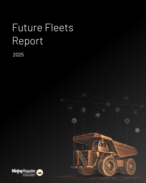The company will ratchet up its capacity, know-how, and planning to control 10 areas of its operations including mining, draglines, reliability engineering and long term maintenance planning.
“Deployment will be carried out through ‘deep dive’ improvement projects, ‘broad-based’ capability building activities, and centralised support and services available to our sites,” Rio Tinto Coal Australia managing director Bill Champion said in a presentation to UBS.
Rio was already starting to see strong results from “deep dive” projects, he said.
The Kestrel mine extension in Queensland has increased underground roadway development rates and Mount Thorley Warkworth in New South Wales has increased average truck loads per shift.
The Hunter Valley operations have increased blasted inventory and the Hail Creek projects in Queensland have focused on shovel productivity and coal recovery.
On the issue of haul trucks, driverless vehicles are not yet part of the plan for the coal operations but standardisation – bringing cost savings and flexibility – is being implemented.
The company will be seeking to improve its wet weather management as it has estimated that 10% of its calendar time is impacted by wet weather.
It has implemented wet weather planning and preparedness and road and ramp design and construction on all sites. It has introduced truck driver training in wet weather conditions.
It is conducted a 240 tonne haul truck trial at its Hunter Valley operations and an “all weather roads” project at its Clermont mine in Queensland.
Champion said Rio was completing its project ramp-up at Clermont and progressing the Kestrel mine extension project.
“KME offers long life –to 2032 – low cost, coking coal,” he said.
“Production will start in 2013 which will lower operating costs at Kestrel.
“The Kestrel West resource could provide top-up production to maintain output.”
Clermont is ramping up to the 12Mt rate, as Blair Athol mine winds down to 3Mt.
A hopper relocation is underway to allow ongoing ramp up and there is potential to expand production from 12Mtpa to 15Mtpa.
Champion said that although high value metallurgical coal production only represented 30% of Rio’s total coal output compared to BHP Billiton’s 65%, its return on assets was competitive at 31% compared to BHP Billiton’s 33%.
“Combined impacts are squeezing the mining industry’s productivity and growth,” he said.
“In isolation these factors may not seem to have significant impact but cumulatively they can transform a good value proposition and render it marginal.”
























